Print on Demand Artist Websites Overview
This overview on Print on Demand services is something of a follow-up to my article last week about making my work available through Fine Art America. The discussion is likely of most interest to other visual artists, but anyone curious to know more about the print on demand experience is welcome! I’m discussing my own experience with each site, and quite honestly for every person I find who has had X experience with one business, someone else has had precisely the opposite experience. Put simply, your mileage may vary.
Background
I’ve been utilizing various print on demand sites for over 5 years now. For part of that time, I also did show and sell some work in gallery shows and art festivals, often with other artists. There’s something to be said for being able to meet an artist and look at their work in person. While I generally enjoyed that experience, I was never a fan of having a closet full of prints and mats and bags, i.e. inventory between those events. Maybe if one participates longer, their inventory becomes more focused? Or perhaps there’s always that one art print that you drag from show to show until the person who loves it finally discovers it?
At any rate, those shows and festivals felt even less practical when life found me in a rural setting once more. That was partially the impetus to focus more on print on demand sites. And the POD industry is quite honestly an ever-changing game. The sites that are rising today can easily be passe next year. At times I’m a little stunned by the fast rise and fall of internet businesses, to be honest. Are we that fickle or is there really some inherent reason that so many internet businesses fail to keep the momentum with which they start?
Imagekind
I’m going to go somewhat in chronological order in this print on demand overview, so that means we start with Imagekind. I hate to say for me personally Imagekind was essentially a POD write-off. Five years ago, their platinum package for artist’s cost about $100 a year! I don’t remember the particulars of the discount I got at the time, but I paid $25 and it was the only year I subscribed at that service level. At the end of the year not only hadn’t I recouped the cost of their platinum print on demand service, I hadn’t made enough to even qualify for a pay out! I remained for three more years as a basic (free) subscriber before I sold a few more prints, qualified for a payout, and promptly marked my remaining work as not for sale! It is really a shame, though, as I was truly bowled over by the beauty of their prints. Even with those fantastic prints, I personally was never able to drive any business through their site.
Redbubble
Redbubble, who I joined later the same year, was a completely different print on demand story. Artists can upload and sell work for free, but there is no free lunch. Redbubble obviously has bills to pay to stay in business, and that free status comes with what I regard as high base prices for the various prints and t-shirts they have on offer. As with all these sites, the artist profit comes from their markup over that base price. It’s attractive to artists to have a free account, but the longer I’ve been on print on demand sites, the more I appreciate the ones that have some type of subscription-based service that pays to keep the servers running and the base prices perhaps a bit lower.
Redbubble was a strong print on demand service for me for several years. However, two years ago the site revised how it handled keywords in a very ham-handed way. It was the push I needed to see what other print on demand sites were offering. I still like the quality of their products, which is why I retain a presence on Redbubble. However my personal take is that they seem to have peaked. The changes over the past two years have felt like little more than the equivalent of a few coats of paint without any real functional upgrades for artists using the POD.
High on my want list when changing my focus from Redbubble was to still have a print on demand service but to have fine tuned control over the look and feel of my portfolio. At the end of the day, I prefer making art with my camera and Photoshop, not printing and shipping it and generally handling the fulfillment end of things. You’ll find artists all over the spectrum on this issue. Some would rather manage absolutely every aspect of things, but for me, my desire to control things mostly revolves around creation and to some degree online presentation.
 Zenfolio
Zenfolio
I reviewed several sites, but I ultimately chose Zenfolio for one major reason. I had been using Mpix, their main vendor here in the US, to do my own prints for several years. Each package I receive from Mpix has surpassed my expectations. I actually discovered Zenfolio through Mpix’s website and that put them at the lead of the pack. Two years with this print on demand portfolio and no regrets!
Zenfolio has multiple levels of membership. At the bottom end, it’s a simple portfolio site, and as you move up the ladder, you get access to print on demand services from a host of vendors. In fact artists and photographers can allow Zenfolio to act as their shopping cart but handle fulfillment on their own terms. A perfect scenario for you major control freaks out there! With each of Zenfolio’s Vendor partners around the world, you can specify whether or not you will use that vendor and what products you will offer. In fact, the pricing tool that comes with Zenfolio is one of my favorite features and the strongest I’ve encountered to date. Most print on demand services seem to just allow you to markup the POD products in one way. Either the site allows you to set a percent markup or a dollar markup. With Zenfolio, you create a price list and you can make it as sophisticated or as simple as you want. And you apply that price list to however many of your images you want. So, you can have a price list for new prints, and a different price list for best sellers, etc. There are probably far more ways you can use this sophisticated tool than I have imagined so far!
The look and feel of a Zenfolio site can be customized to a degree, but if you’re looking for a print on demand site where you have intimate control over the design of the site, you may want to keep looking. I know this is the reason some artists and photographers choose Smugmug, but I have no personal experience to offer there. When I chose Zenfolio, I wasn’t interested in getting dirty with the CSS side of things. I love Zenfolio’s simple clean page layouts to choose from. And I have been more than happy with the level of control offered over the general look of the site through background colors, background images, fonts, font colors, what appears on the menus, etc. I think the average photographer or artist who isn’t an armchair web designer can more than make their Zenfolio-powered site their own style without having to know the inner workings of their site. There have been hints that more ability to customize the site may be coming, but there are already so many features I don’t use that I’m not waiting with bated breath!
While Zenfolio can both be your portfolio as well as a print on demand service, you are something of an Island on the internet. It takes a good deal of effort for visual artists to make their work visible on the internet on any site. A picture may be worth a thousand words, but on the internet, we still use words to search! Maybe something like Google Image Search will eventually turn this paradigm on its head, but right now, a potential fan or even collector of your work will enter a word or phrase into a search engine. And you may have a perfectly suitable piece of art to match that term, but search engines will deliver your work to them only if those words or phrases are in the content on the page surrounding your image! If I had a penny for every artists who has included very little in the way of descriptions around their artwork… That diminutive description scenario leaves it up to that artist to drive all their traffic. Search engines will rarely find their work to show it to the person searching for it. After a year of writing and re-writing my content, both to make it more easily found and more personal, this is a subject near and dear, but I’m beginning to digress from the subject!
Fine Art America
There was a reason I was going there, though, because it explains my decision to expand and offer my work on other print on demand sites. While I am beginning to see some fruit from my labor of re-working all those descriptions, I also recognize that there’s a benefit to being on a high profile print on demand service that ranks high in the search engines on its own accord. Because a POD like Fine Art America has a high web ranking, my artwork with similar quality in descriptions and titles, has a better chance of rising to the top in search engine results. I wouldn’t count on any of these sites to generate results internally. Yes, there’s the possibility that a customer may come directly to the site and plug in a keyword that leads them to your art, but there’s a lot of internal competition for those results. I picked Fine Art America for the additional visibility for my work as well as a great line up of quality print options, some of which are not duplicated through my Zenfolio POD.
My feedback on Fine Art America as a Print on Demand service will, understandably, be brief right now, but I’ll try to follow up on this in the future. It is funny, though, that one of the features I was most excited about is one with which I’ve been least enchanted. What feature is that? It’s the ability for customers to preview 100% crops of my work. I spend a lot of time zoomed in on my work in increments far greater than 100% in order to fine-tune the details of anything I want to offer for sale. Yet when I see it at 100% in a customer preview it feels a bit gimmicky and unrealistic to me. This is not the way people observe artwork. At least, I can’t recall the last time I personally stepped up to a photo or painting and put my eye an inch from the surface. I’ve left the feature enabled. Perhaps there are potential customers who will appreciate it far more than I do, but for me it does little.
The one challenge I’ve found with Fine Art America is with its pricing tool. And here-in lies one of your challenges if you choose to offer work on multiple print on demand sites. Just as an example, Redbubble allows you to set a percent mark-up, and until only the past year or so it was a single percent for each artwork, be it greeting cards or canvas prints! Fine Art America by comparison allows one to set a dollar amount markup for each print size the artist chooses to offer, but there’s no way to choose whether or not you offer a given paper at that size or to charge a different artist markup for a given substrate. Combine this with Zenfolio that has an entirely different level of control and it quickly becomes complicated! My goal, of course, is to keep the prices as close as humanly possible despite these different pricing mechanisms and different base prices. Still, there is no way to keep multiple print on demand sites completely in sync in regards to pricing. I can only dream that at least Fine Art America might beef up this one area and give artists a little more control over the pricing of different substrates, or for that matter whether an artist even wants to offer a given work on a given paper. This has been the only thorn in my side thus far with Fine Art America.
There are only two account levels at Fine Art America. Currently with a free account, you can upload an unlimited number of images, but you can only offer 25 of them for sale through their Print on Demand Service. To offer more of your work for sale, you’ll need a premium account for $30 a year. There are some perks that come with that price including an artist portal similar in concept to Zenfolio’s portfolio. The benefit of the artist website is, of course, that you can drive your traffic to a site with fewer potential distractions while still making your work available through the main marketplace. Fine Art America allows far less control over the look and feel of their artist website. You can modify the header and choose from a handful of color schemes, but beyond that your control over how the site looks is very limited. In fact, you can’t remove menu items you don’t intend to use. There are tools like the built in blog and mailing list that duplicate my main site. Now, if you don’t already have those features elsewhere, you’ll be excited to have a print on demand service that includes them, but I’d still like the power to hide the tools I’m not currently using.
Zazzle
The only print on demand site I have a presence on but haven’t covered in depth here is Zazzle. Chronologically I wasn’t quite sure where to place it, and I’ve also had a waxing and waning relationship with Zazzle. There’s not enough control over the prices and substrates of prints for me to utilize them for regular prints while offering the same work on other sites. I would never come close to similar prices based on my past attempts. I have experimented in the past year with offering some collage-style posters through their POD site but honestly haven’t created enough work in that genre to report on that one way or the other. Most of my sales on Zazzle have been through t-shirts and products like their iPhone and iPad covers. I find the great bulk of my sales on Zazzle occur near Christmas. Zazzle offers a dizzying array of products, though, so it’s worth checking out. Perhaps I will find the time to build more of a presence there, but that’s about the extent of my feedback for them. If you have more detailed feedback on this POD, feel free to sound off in the comments!
Summary
Aside from Imagekind, I would recommend any of the above for the visual artist who aspires to offer their work via Print on Demand. Heck, assuming Imagekind’s products still match what I got several years ago, I’d even recommend their products. The thing is there is no one size fits all option. Despite liking their products, I slowly found Redbubble to be an ill-fitting shoe for me. You might have a different experience. My top two POD choices at the moment should be obvious from the above, but it really does boil down to what fits you best. If you’re good with a Print on Demand site that has a great reputation and ranks high in the search engines, and you can live with an artist portal that you have little ability to customize, you can hardly beat $30 a year for Fine Art America. If you need more control over the look and feel of your site and the products and prices you offer, then Zenfolio could be your ticket. My main hope is in the end I’ve offered some insight that will allow you to get a better handle on what print on demand will fit you!
Links:
Note: Have your own experiences to share concerning Print on Demand Sites? Please share them in the comments, and feel free to link to articles on the subject you’ve written or found particularly helpful. This is one post that I was hoping would be beneficial to others trying to follow their dreams, and the more input the better.
Follow-Up: This article has remained popular over the last several years and I have frequently been asked about how my experience may have changed since then. To see an update check out this recent post on Artists Websites today.



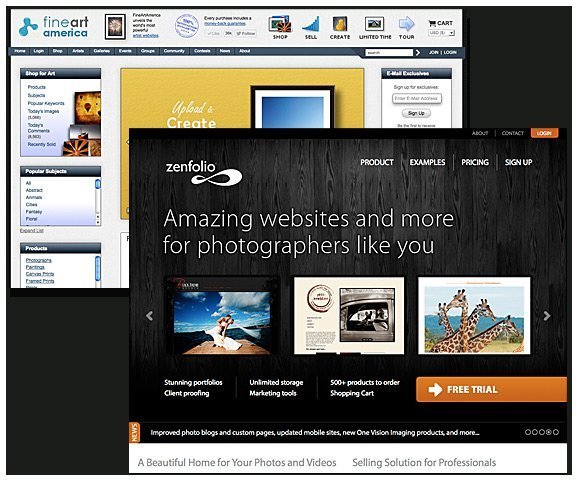
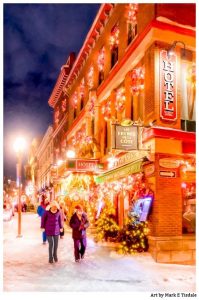
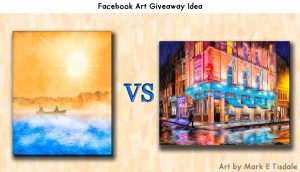
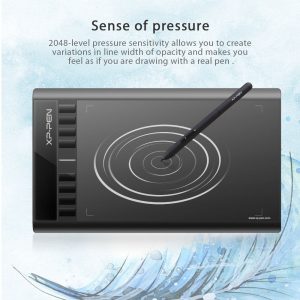

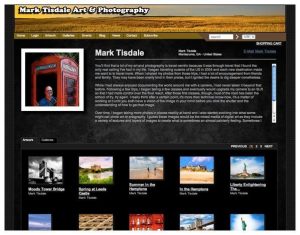
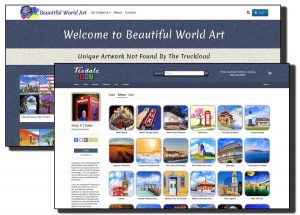
Nice post! I also recommend that you check out Peecho.
Using their service is really simple, you just install their “cloud print button” on your own site to get started selling your prints. They have a nice range of products, not only posters and the like but also books and magazines. I found out about in this artist’s site: Dawn Dudek
Interesting site Ale – I have added it to my list of sites to check out in more detail. I am still getting ‘moved in’ to my Fine Art America account and I fear if I start any more new projects I’ll never finish one! 😉 I can only multi-task to much! Especially interested in seeing their book and magazine options. I have used Blurb books in the past which I didn’t even think to mention in my huge round-up above. They produce a fantastic product but print on demand for books is very pricey!
Anyway, thanks for the feedback!
I can speak to Fine Art America. I am about to complete my first year. The site has exceeded my expectations. I have sold a handful of prints without much time and effort. With FAA all you have to do is upload images and set up a paypal account. They do the rest. I initially thought it would be a waste of $30, as who would find my art among 4 million images? but I’ve made my money back several times over. I am not actively marketing myself, but like having a stand along website. It looks professional and has resulted in gallery representation. I am so encouraged I have now set up my FAA shopping cart on our company web store and customers can make purchases without ever leaving our website.
To see how the store looks on our website go to: http://www.shadesofpale.com/
This slide show was very easy to set up. All I had to do is cut and paste a pre made code FAA makes available through their marketing tools menu.
They have slide shows I could have set up instead and they also have an out of the box facebook shopping cart I may use in the future.
Alexandra
Glad that Fine Art America is working so well for you Alexandra! I don’t like to keep all my eggs in one basket, so I’ll continue to have a toe in many places, but when other artists ask for a good place to start, I do point them that way.
I do like the new shopping cart widget, as well. I have mine embedded a few places. You’ve done a really good job of integrating it with your site!
Great summary – thanks. I’ve only recently gotten into POD since giving up on Microstock sites. I have a big portfolio on 500px and 1x.com and even after getting photos selected for curation on 1x.com, I have yet to sell anything. The print choices are minimal – basically canvas wraps in one or two sizes and pricey.
I’m just beginning to build out my FAA port and like the fact that I can add photos to my artist website and they appear on the main site or vice versa. You can direct traffic to your artist site alone, and the premium account provides Google analytics, which is nice. It also offers Twitter and Facebook updates when you add a photo, so you can market your work very easily. Also (I haven’t tried this yet), you can use the FAA fulfillment piece on your own website if you have one.
I am curious about which site SELLS the most. I see constant updates on FAA shouting “Joe Blow just sold My Little Pony” to a buyer in Kenosha! But then if I look at the artist profile, I see he’s in Kenosha too, so I wonder how many of those exciting sales are artists buying their own work. Not that there’s anything wrong with that…
Glad it was helpful Dave!
On the sales on Fine Art America – I’ve not tested it, but am told that if you look at the sales page, it’s sales to other buyers, i.e. that the artist buying their own work doesn’t generate all those announcements. Now, this COULD be the artist logged in with an account using an entirely different email address, but I can’t imagine that many are out there trying to beat the system by buying from their own portfolio over and over to boost their rankings.
Sales in the same location could well mean they are locally known for their art (i.e. local marketing). Even if it is them buying it, they might be buying it because they have a local buyer and are handling the purchase from Fine Art America on their behalf to deliver personally.
There are a lot of different scenarios because their are an awful lot of ways from point A to point B in this game. I covered how I go about things in a later post that you might enjoy if you haven’t already read it:
Getting Seen – Selling Art Online
But that’s just one way. For every person like me trying to get a handle on search engines, there’s another person being super social online or someone taking advantage of their local art scene. Or more likely people doing a mixture of them all. It’s not as simple as set it and forget it unfortunately.
I wish I’d seen this article a few weeks ago, I’ve just spent a lot of time figuring some of this out for myself. You have provided a lot more detail, by having the experience of using the site, so thank you so much. I have just set up my FAA site, and a Facebook page to market my work. I figure though that I need at least a Zenfolio site as well, so that potential customers in the UK can buy products without shipping from the US, which is the biggest issue I have with FAA. I haven’t yet found anywhere with a partner based in Canada though unfortunately, so if you know of one I’d love to hear about it. After more research today, I found Zazzle, and am very tempted by their “gift” products. I wonder though if 3 sites might be a bit much to deal with, especially as you say when it comes to keeping pricing as similar as possible.
Thanks again, tomorrow’s research will definitely involve reading your other posts!
Hey Dee – glad that you found my blog article helpful and hope you find the rest are helpful as well!
In my opinion, yes you can spread yourself too thin, but I also wouldn’t keep all my eggs in one basket. I’ve had the experience too many times of Site X sales slowing down. Sometimes just for a moment, sometimes forever! If you had concentrated on that one place, it can be a severe blow!
Still, starting up on multiple sites at once might be taxing depending on how large your catalog of work is. It would be for me, but for some it might be a change of pace to switch from one focus to another like that from day to day.
As for Zazzle and the pricing issue, some people sell there and other places as well and just accept the issue of a $ markup vs the percent one. For me, it would bother me to know that one customer paid X for a print there and another paid X more or less on another site for more or less the same thing. That’s why on Zazzle I stick to non-print products like cards, pillows, t-shirts, etc.
I haven’t heard of any POD’s with printers in Canada either. I really feel like we’re all missing out without one, both artists outside Canada and those who are located there. I hope someone steps in and fills that void! If you discover one, be sure to shout out!
Thanks for sharing this information. I sell my art on Zazzle products and I am always interested in finding other markets.
Here’s one Canadian POD service – haven’t tried them though – http://www.fineartprints.ca/index.html
Fabric artists might like http://artofwhere.com/ – they also do beanies and iPhone cases etc.
Cheers!
Will have to check them out Christine – thanks for sharing with me and other readers of this post! 🙂
Thanks for the information. It’s a great help. Thanks!
Very interesting information here. I have a small presence on Fine Art America and found myself wondering if anyone can comment regarding the quality of the prints FAA produces. Any thoughts or recommendations regarding actual experience with one paper vs. another or quality consistency issues, if any.
Dan – sorry for taking a bit to respond. I’ve been tied up and haven’t been checking in on comments.
First it’s important to know that Fine Art America/Pixels doesn’t produce prints directly. They have vendors they use in different places for different products. When I started with them a decade ago, it was one or two vendors – all in the US. Now they have multiple vendors in the US, some in Europe, Australia, Canada, etc.
They’ve vetted them to produce the same quality products as far as I know. They added on new vendors over the years not all at once.
Anyway, that’s the long way of saying I can only directly comment on the things I’ve gotten in my corner of the US Southeast. And those have been great. I’ve gotten a good share of paper and canvas prints over the years and been happy with them and haven’t noticed some being better/worse than a previous order. The customers I’ve heard from have loved what they got including one not so long ago from Portugal. That was nice to hear simply because it’s undoubtedly coming from a vendor I won’t see first hand unless I go abroad and order prints. LOL
My recommendation is to order some for yourself. For paper prints, you can try different papers they offer at a smallish size unless you have something to use them for personally or want to give them as gifts. I order periodically to make sure prints are still coming out as I expect them. Both to test their print quality and my color calibration. And I have several canvas prints hanging. I have dabbled less in the other products but customers who have contacted me, as I said, have been very happy. And returns are exceedingly rare (on the order of whole years passing without them). So I’ve built up some confidence about their print quality.
I hope that helps, but as I said, in the end, it helps to see the products for yourself. It also helps when potential customers have questions about the ordering process or products.
Thanks,
Mark
Thank you for the review. I am getting here a little late as you wrote the initial piece years ago. It seems like all of your companies have remained.
I am on my 3rd year at FAA artist. https://patty-donoghue.pixels.com . The site is easy to use and the cost is great. I am although seeing less and less in sales and commercial interest in the art. I do notice that for the company size it is questionable if the owners are putting in resources to drive commercial designers to the prints or to foster their relations with the frame companies or other relationships they had.
What are your opinions these days?
Hi Patty,
I’ve been there just over ten years now and although I don’t look as often anymore I’ve yet to find a POD that I prefer over them. I am, however, always happy to hear about any new ones that enter the market. I don’t like all my eggs in one basket. I’m still using more or less the same mix from years ago. I have written a more recent post on this subject here if you’d like to read it. Although I could definitely update it again.
I am still using FAA for fulfillment but am adding a Shopify store. I love their network of printers and the actual products. However, I’m happy having a Shopify store where I control the presentation. For the price, the artist website offered with our accounts at Fine Art America is a steal. You won’t get more for less. But it doesn’t have all the tools I’d like. I am intending to write up a post on using Shopify with Fine Art America but I haven’t gotten to that point yet.
I surely can’t pretend to know the minds of the people behind FAA but I don’t think they’ve neglected the business. They are clearly still making changes to the site, etc. I gather from what I hear that they are marketing the site. But what we all need to remember is they aren’t our individual agents. Their business is growing their business. Sometimes the changes they make are going to impact individual A positively and individual B negatively. I don’t believe it’s a malicious thing just that their interests don’t always coincide with ours. That’s why I said I don’t like having my eggs in too few baskets and part of the reason I’m working on my Shopify store. Although it would be a huge chore, I could pivot and use someone else as a vendor if for instance the business was sold or something else happened to convince me that I needed to look elsewhere. We ultimately have to be concerned about our individual business as an artist, no one cares about it as much as we do.
Hope that mini-book helps. I can get long-winded!
I have been on Imagekind for almost five years, actually paid the upgraded membership fee ($99) for the first year, and am still waiting for my first payout. Don’t bother.
FAA is quite good for me. Redbubble and Society6 have constant sales too though the payouts are much less.
Just joined CafePress seeing what happens with my first 80 uploads.